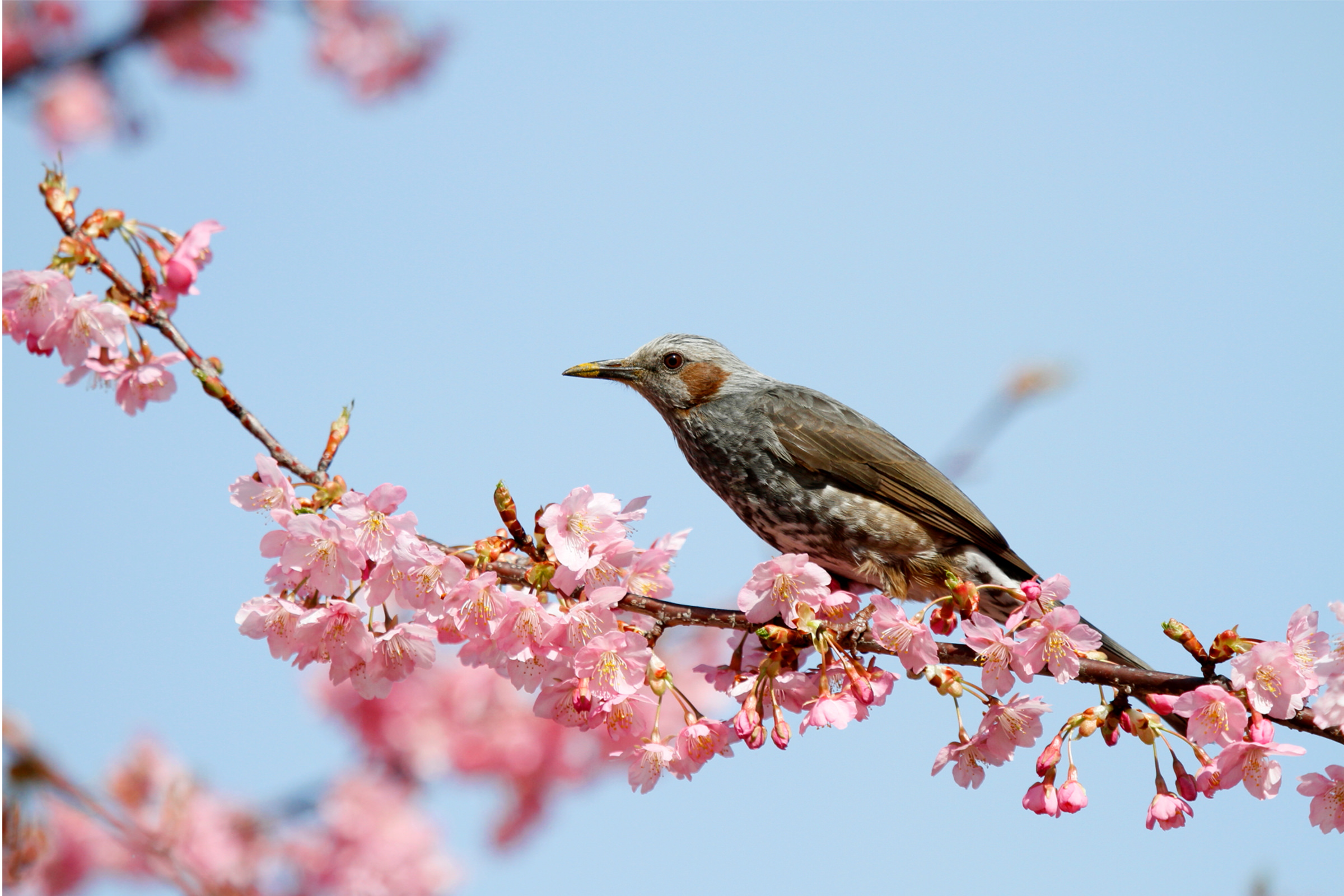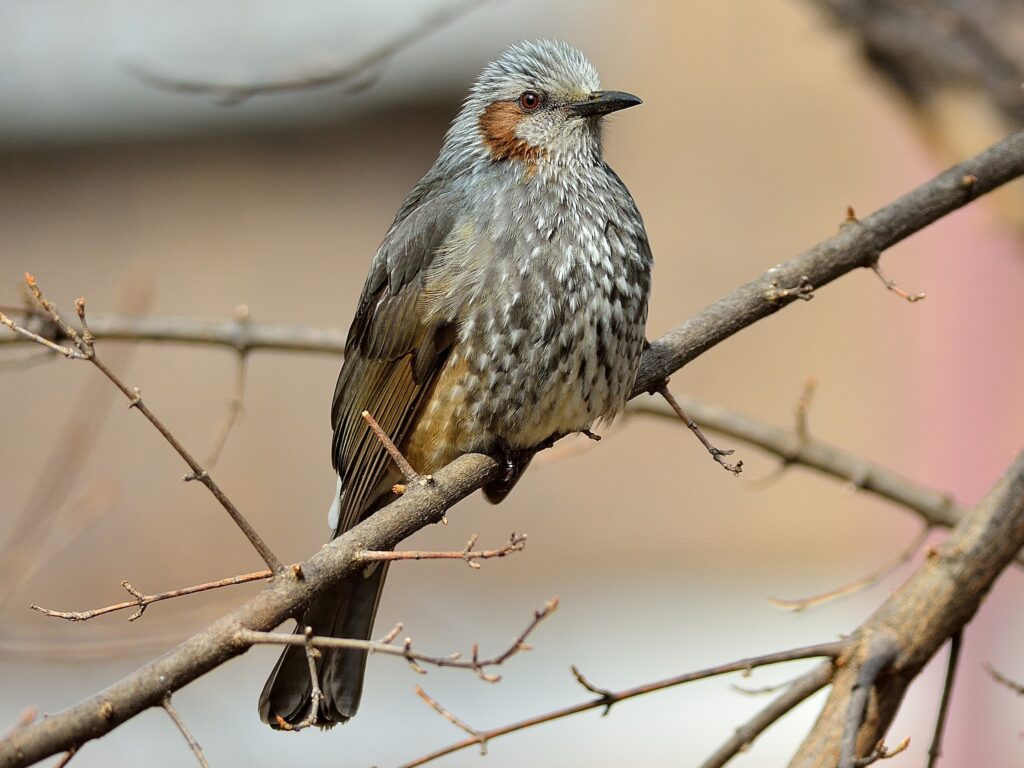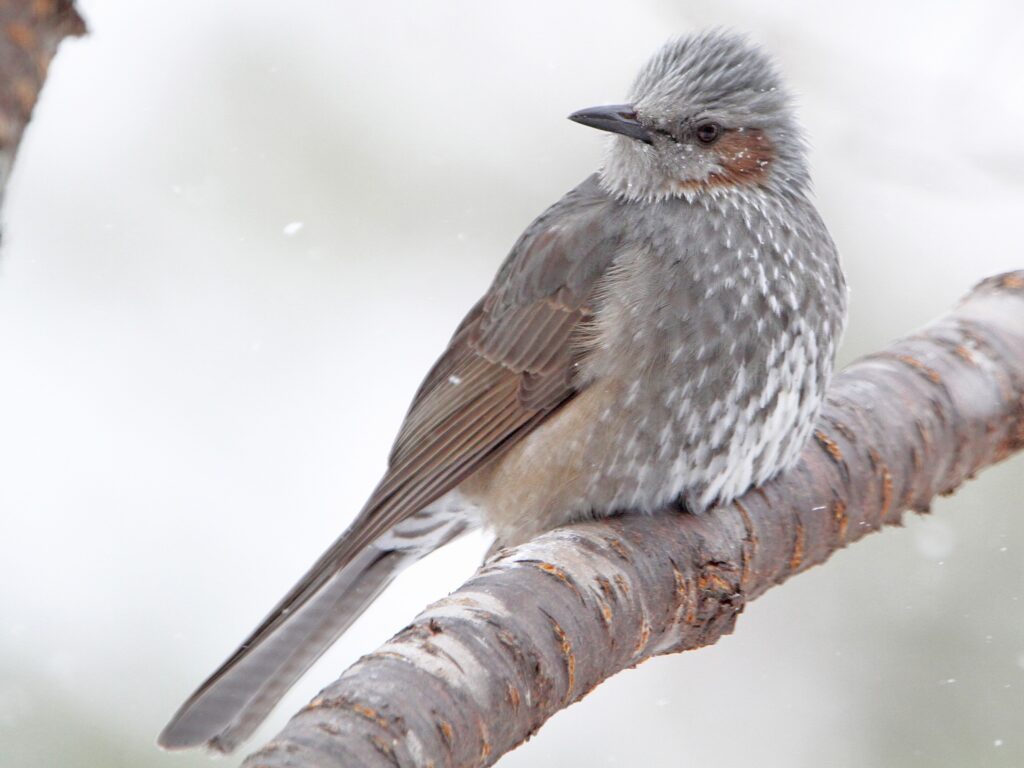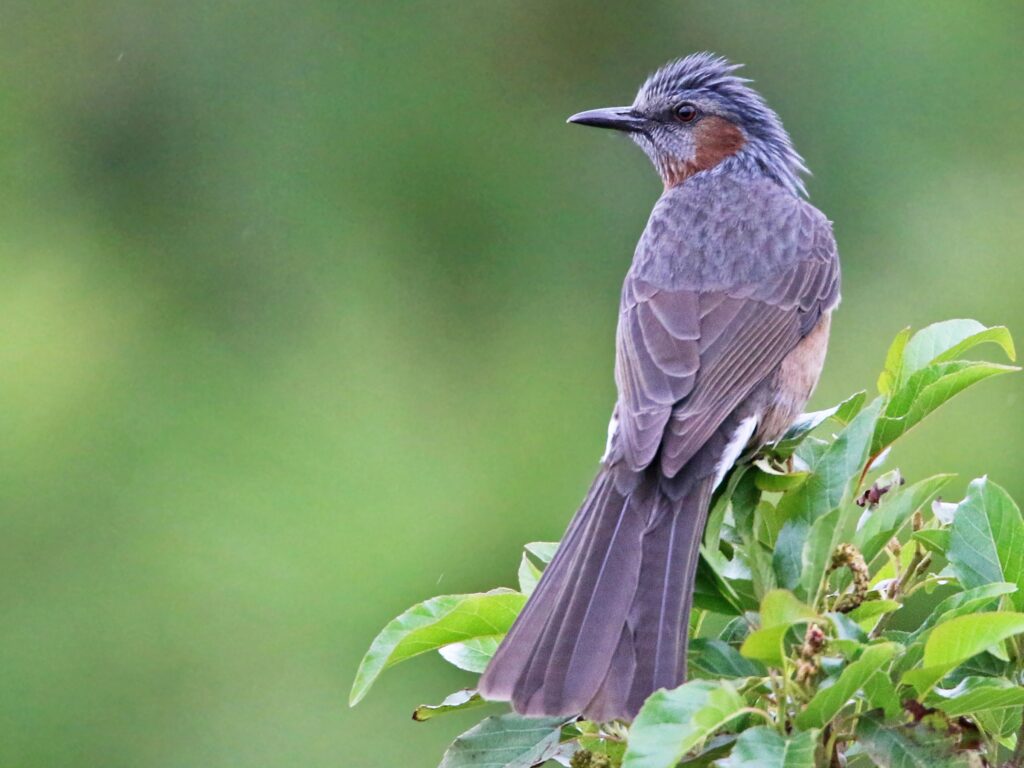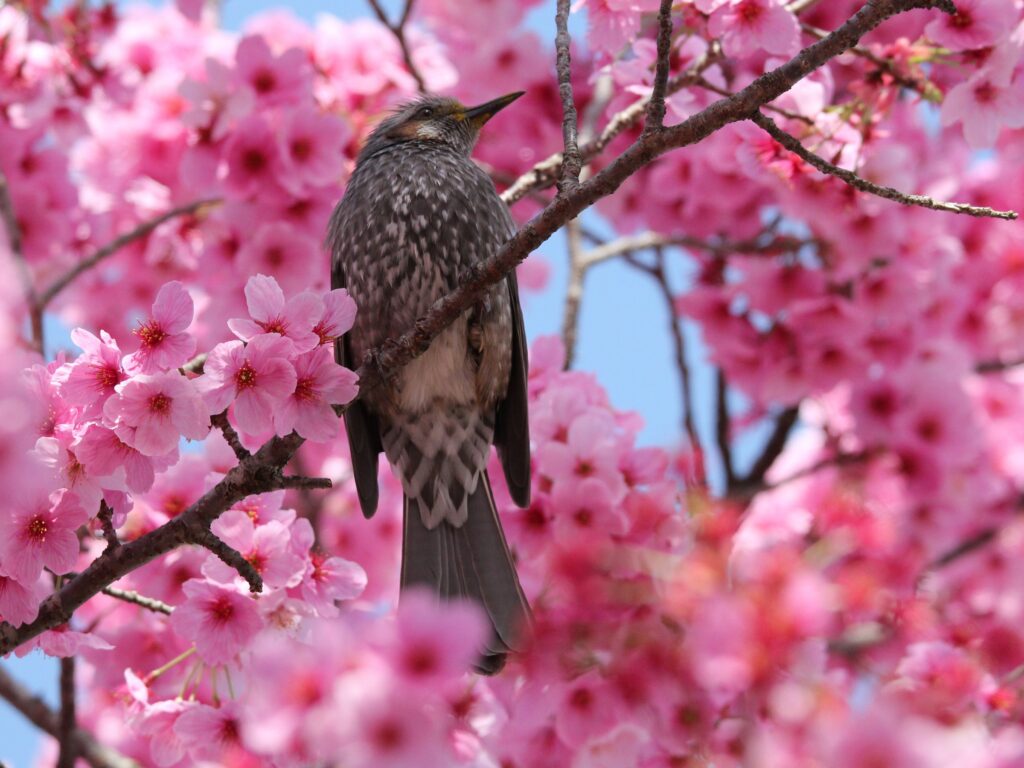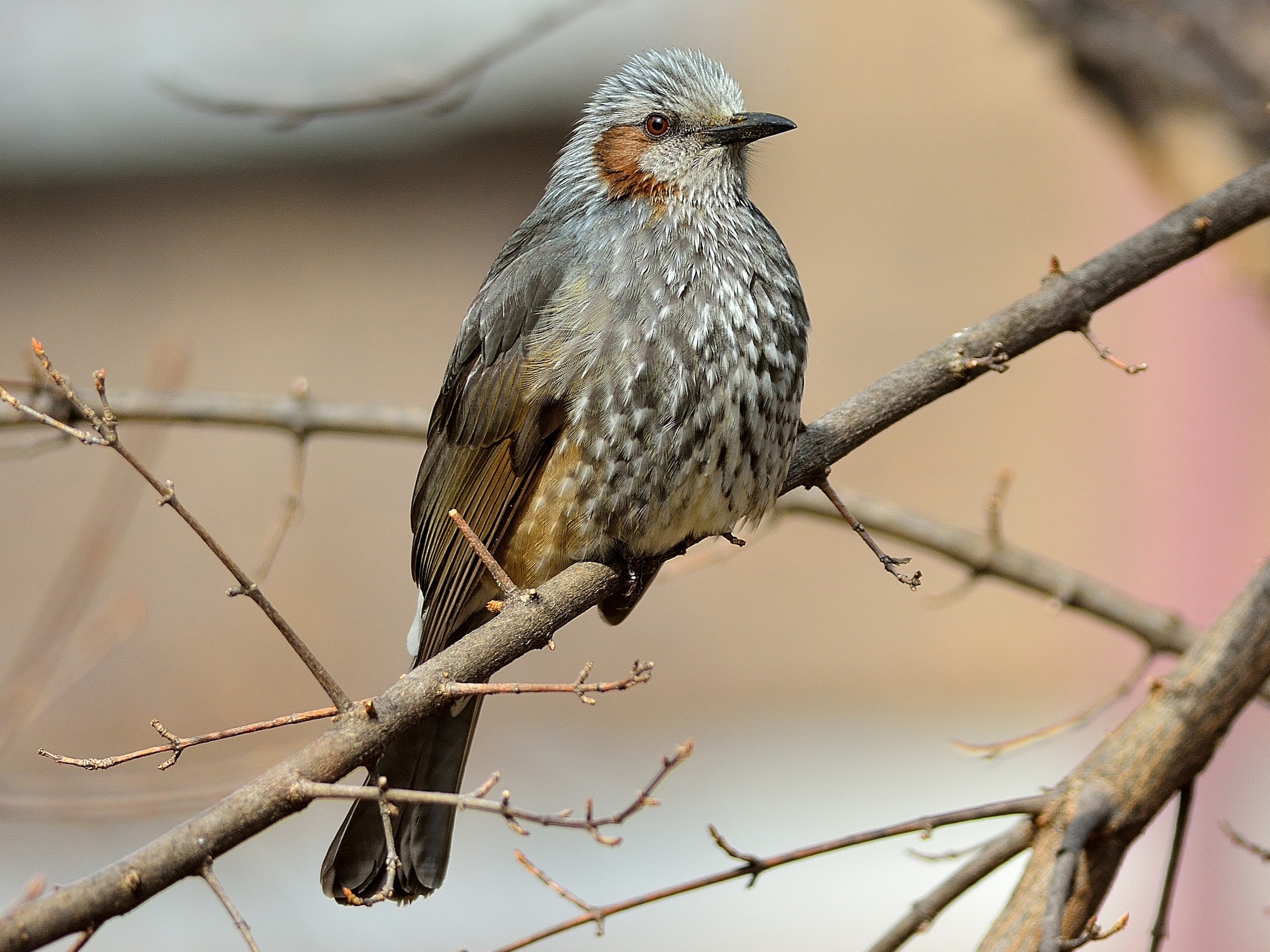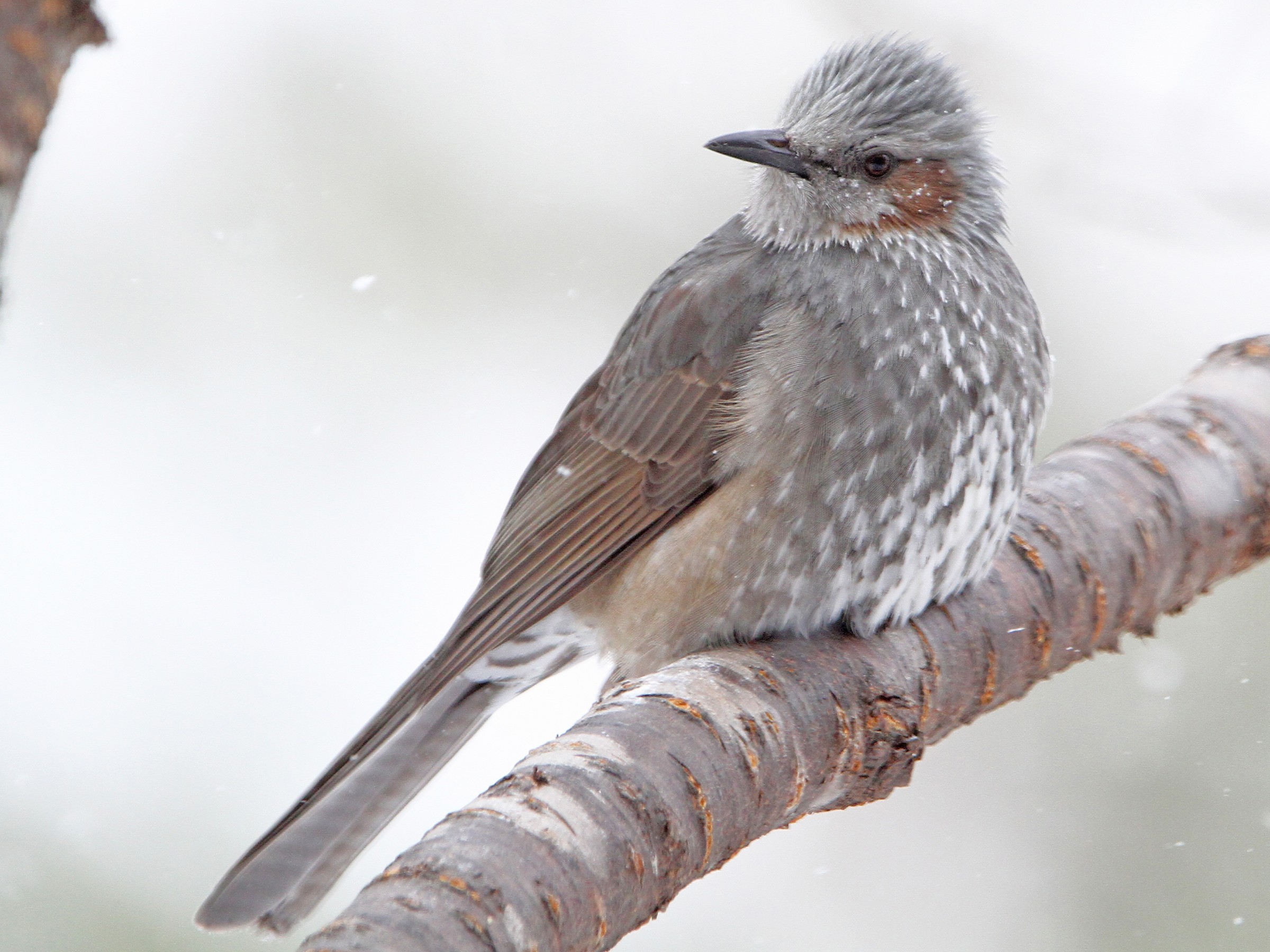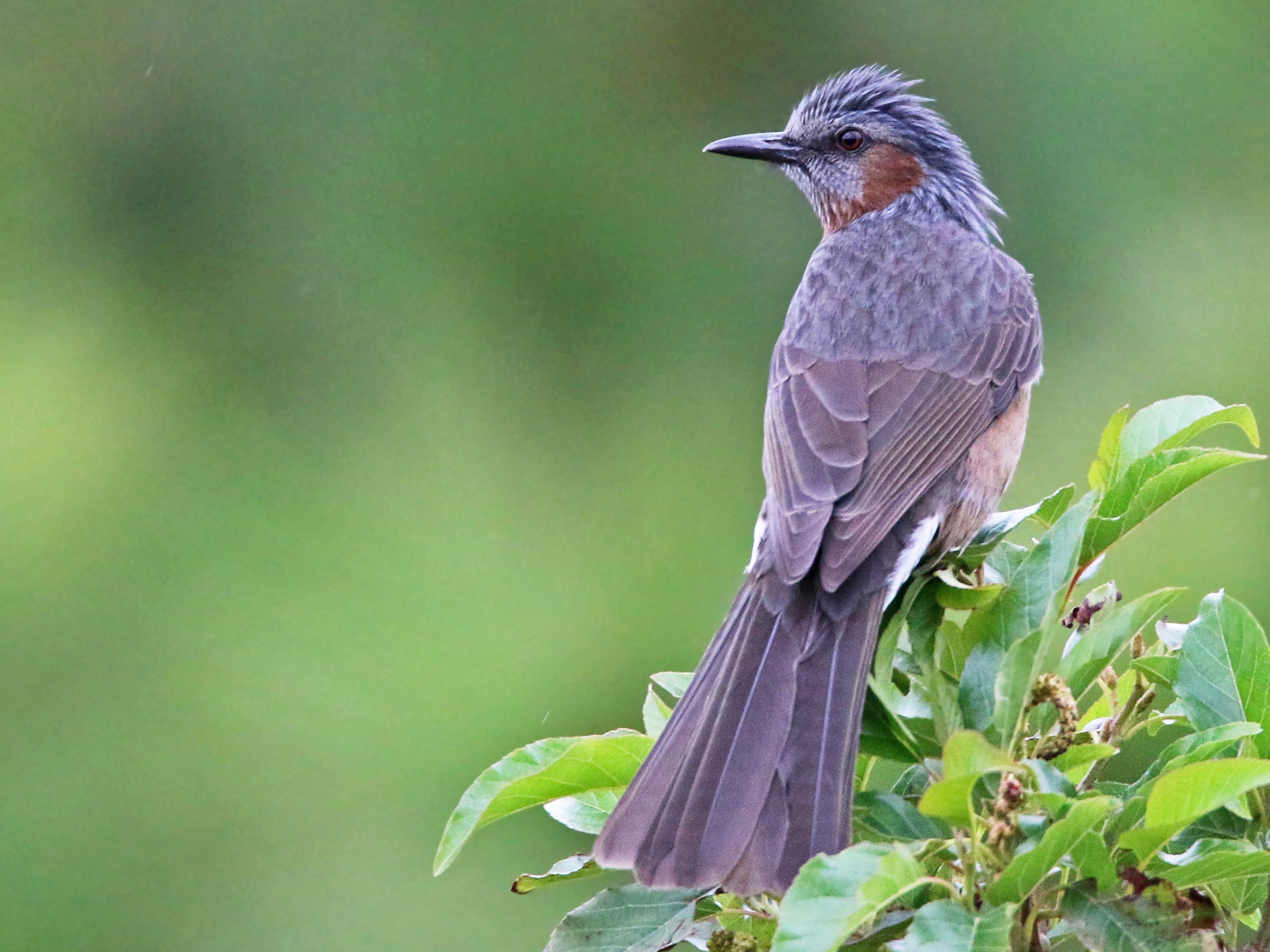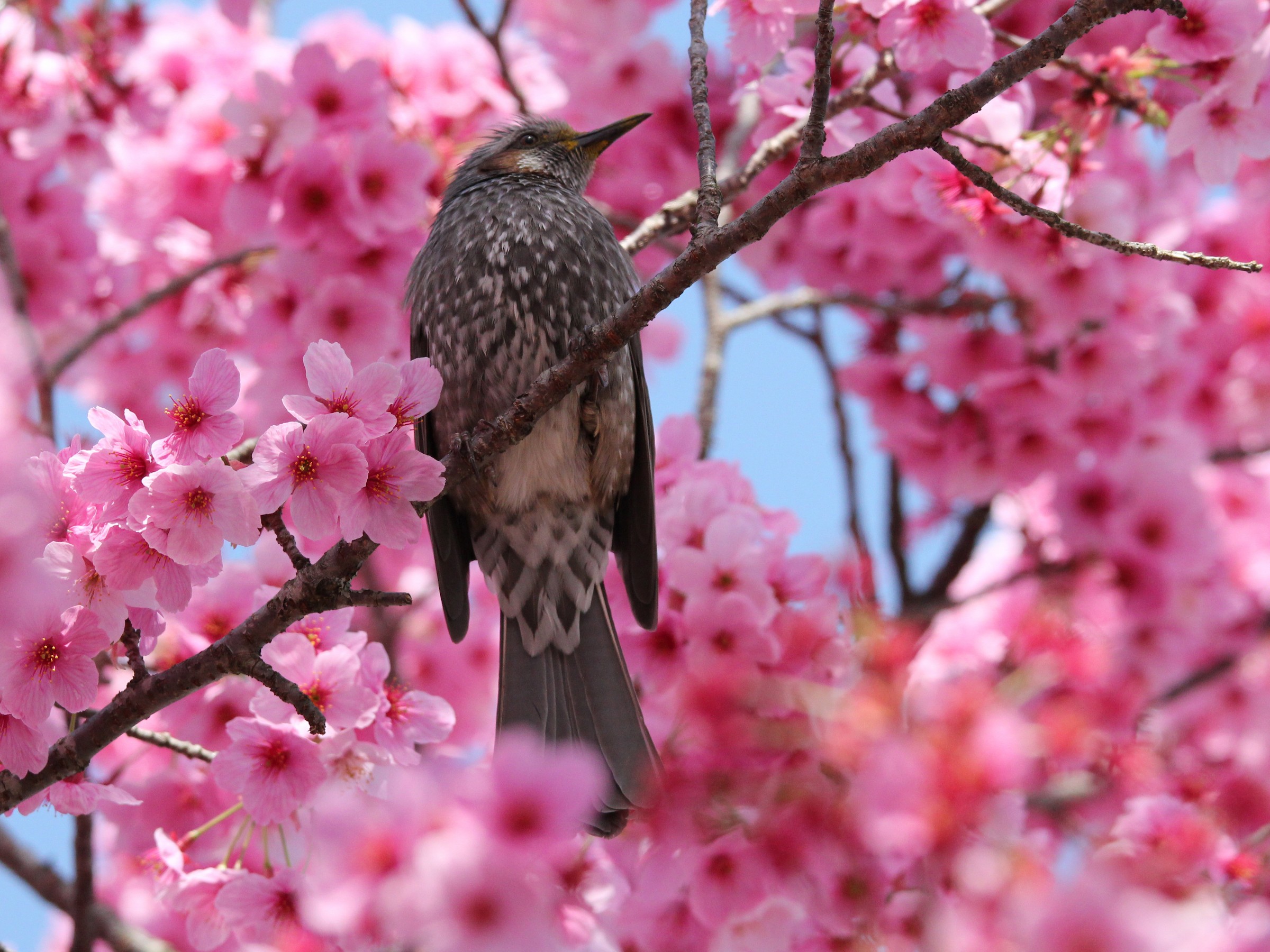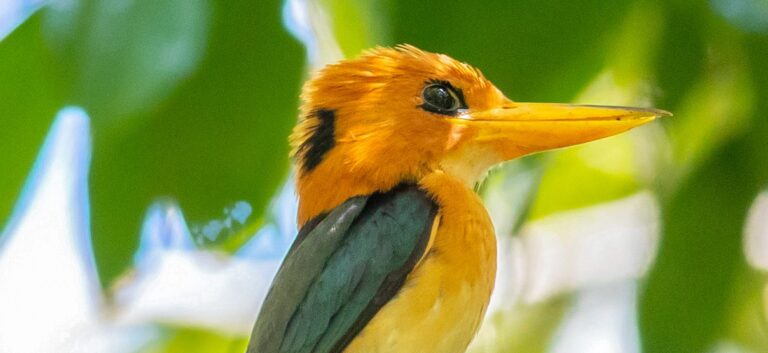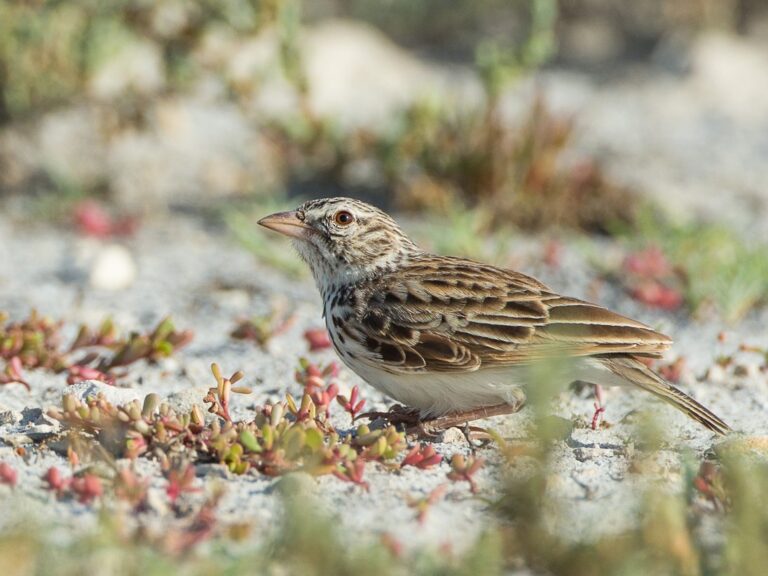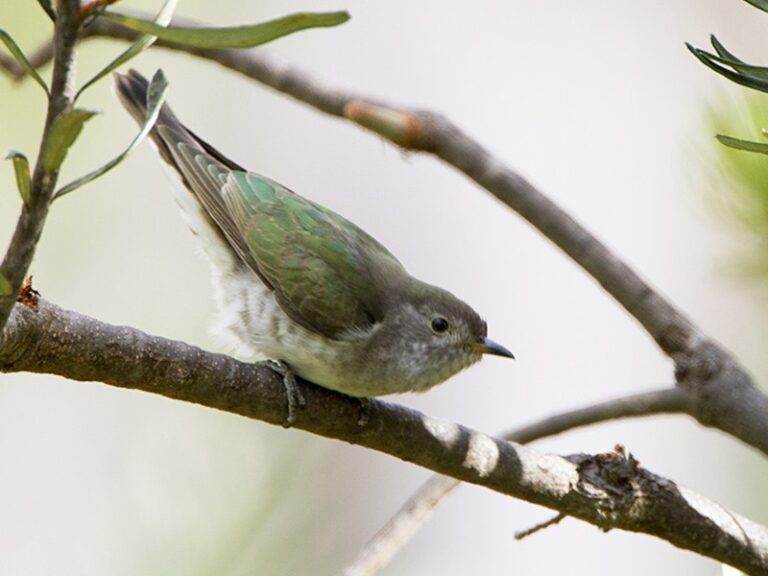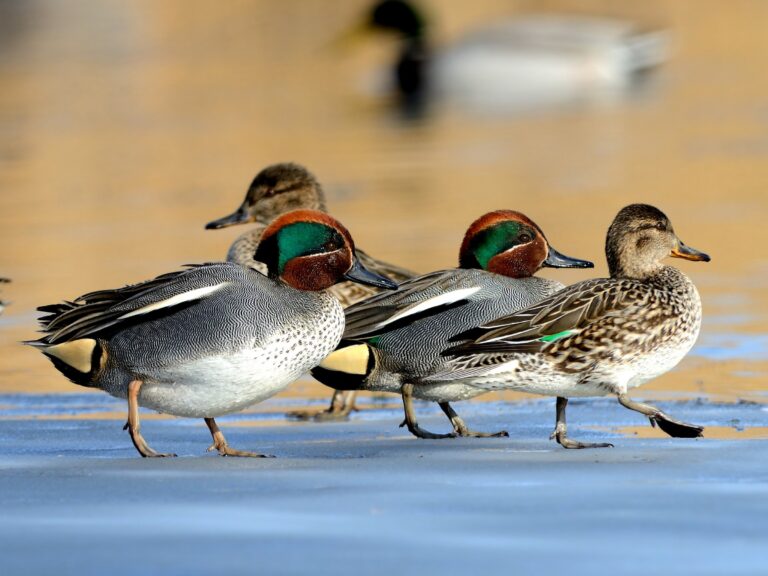Brown-eared Bulbul: A Guide to Their Habits and Habitat
The Brown-eared Bulbul, known scientifically as Hypsipetes amaurotis, is a fascinating bird native to Asia, particularly in regions like Japan. This bird plays a crucial role in local ecosystems by acting as an important seed disperser, which helps maintain plant diversity. With its distinctive appearance and behavior, the Brown-eared Bulbul captures the interest of birdwatchers and nature enthusiasts alike.
These birds thrive in a variety of habitats, including forests, gardens, and urban areas. Their diet mainly consists of fruits, insects, and other small foods, showcasing their adaptability in both rural and urban environments. As they breed, they showcase unique nesting habits and parental care, making them a subject of study for ornithologists and wildlife lovers.
Understanding the ecological importance of the Brown-eared Bulbul can spark curiosity about conservation efforts in its habitat, especially in light of human interaction. Exploring its behavior, feeding patterns, and breeding habits reveals more about how this bird affects its surroundings and supports biodiversity.
Key Takeaways
- The Brown-eared Bulbul is a key seed disperser in its ecosystem.
- This bird adapts to various habitats, including urban areas.
- Understanding its behavior can inform conservation strategies.
Taxonomy and Classification
The Brown-eared Bulbul is a species classified within a specific taxonomic hierarchy. This section discusses the genus it belongs to and the different subspecies recognized.
Genus Hypsipetes
The Brown-eared Bulbul is scientifically named Hypsipetes amaurotis. It is part of the genus Hypsipetes, which includes several other species of bulbuls. This genus is within the family Pycnonotidae, noted for its diverse avian members.
Hypsipetes primarily inhabits regions across East Asia, including parts of Korea, Japan, and China. Members of this genus exhibit a variety of physical traits, but they generally share a bird-like appearance with rounded bodies and strong beaks. The taxonomy of this genus plays a crucial role in understanding their ecological and behavioral characteristics.
Subspecies Variety
The Brown-eared Bulbul has two recognized subspecies: H. a. amaurotis and H. a. chrysonotus. Each subspecies varies mainly in coloration and geographical distribution.
H. a. amaurotis is found mainly in eastern Asia, characterized by its more subdued coloration. In contrast, H. a. chrysonotus is prominent in southern regions and is generally brighter in appearance. These variations are often linked to environmental adaptations, helping each subspecies thrive in its respective habitat.
Understanding these subspecies is important for conservation efforts and studying the species’ ecological role within their environments.
Habitat and Distribution
The Brown-eared Bulbul, known for its adaptability, can be found in various regions, particularly in East Asia. Its preferred habitats range from forests to urban areas.
Geographical Range
The Brown-eared Bulbul is primarily located in several countries, including Japan, Korea, and Taiwan. Its range extends from the islands of Japan to the coastal areas of the Korean Peninsula.
In addition, it can be found on Sakhalin Island and the Philippines. This bird typically occupies a wide geographical area, making it a familiar sight in both rural and urban settings.
Habitat Preferences
Brown-eared Bulbuls thrive in diverse environments. They are often spotted in forested areas, favoring regions with abundant fruiting trees.
These birds are also common in urban areas, where they adapt to human disturbances. They utilize parks, gardens, and residential areas that provide food sources.
In urban environments, their ability to forage on fruits and insects helps them to sustain populations. This adaptability allows them to flourish in various habitats throughout their geographical range.
Diet and Feeding Behavior
The Brown-eared Bulbul is a versatile feeder, adapting to various food sources in its environment. Its diet mainly includes fruits, seeds, and insects, which allows for flexibility in food selection depending on availability.
Feeding Habits
Brown-eared Bulbuls are primarily frugivorous, meaning they consume a lot of fruit. They are known to eat a variety of fruits, which provide essential nutrients and energy. In addition to fruit, they also eat seeds and insects.
Common food sources include:
- Fruits: Berries and soft fruits are favorites.
- Seeds: They often forage for seeds in the environment.
- Insects: Occasionally, they catch insects, especially during breeding season when they need protein for their young.
Their feeding behavior is influenced by visual stimuli, as they often select fruit based on color and ripeness.
Dietary Adaptability
The Brown-eared Bulbul demonstrates great dietary adaptability. This bird can switch between different food sources based on what’s available.
In urban areas, they often consume nectar from flowers, playing a role in pollination.
Key aspects of their adaptability include:
- Seasonal changes: They adjust their diet with the changing seasons.
- Urban feeding: They feed on cultivated fruits in urban settings, showing a willingness to adapt to human environments.
This flexibility ensures they thrive in various habitats and conditions.
Reproduction and Breeding
The reproduction and breeding habits of the Brown-eared Bulbul are vital for their population sustainability. This section focuses on their breeding season and nesting behaviors, highlighting how these factors influence their reproductive success.
Breeding Season
The breeding season for the Brown-eared Bulbul typically occurs between April and July. During this time, the birds become more vocal and territorial. Males engage in singing to attract females and establish dominance.
Breeding pairs often form during this period, with males performing displays to woo females. The duration of their breeding season allows for multiple nesting attempts if the first is unsuccessful. Bulbuls are known to be affected by environmental factors, such as food availability, which influences their breeding timing and success.
Nesting Behaviors
Nesting behaviors are crucial for the survival of Brown-eared Bulbul chicks. They prefer to build their nests in dense foliage, such as shrubs and trees, providing cover from predators.
Nests are constructed using twigs, leaves, and grass, creating a sturdy structure. The female typically lays between 2 to 4 eggs, which she incubates for about 12 to 14 days.
After hatching, both parents participate in feeding the chicks, which rely on insects and fruits. This biparental care is essential as it increases the chicks’ survival rate during the early stages of life. Cuckoos are known to parasitize some bulbul nests, laying their eggs in place of the bulbul’s.
Behavior and Ecology
The behavior and ecology of the brown-eared bulbul reveal its complex social interactions and migration patterns. This bird species showcases unique social dynamics and seasonal movements that are critical for its lifecycle.
Social Behavior
The brown-eared bulbul is known for its gregarious nature. These birds often form large flocks, especially in areas with abundant food sources. They communicate through a variety of vocalizations, which include whistles and chirps.
They also display social hierarchies within the flock. Dominant individuals often have priority access to food and preferred feeding spots. This species is particularly important for seed dispersal due to its frugivorous diet. As it consumes fruits, it helps maintain the health of local ecosystems. For details, the brown-eared bulbul acts as a key player in the ecological balance.
Migration Patterns
Brown-eared bulbuls are primarily found in the Russian Far East and over the Korean Peninsula. They typically migrate in response to seasonal changes and food availability.
In winter, many individuals move to warmer areas where food is plentiful. This migration can cover significant distances. Birds may travel from northern breeding grounds to southern wintering habitats.
During migration, they often travel in groups, which provides safety in numbers. Their adaptability allows them to thrive in various environments, making them a common species in many locations.
Conservation and Human Interaction
The Brown-eared Bulbul plays a role in its ecosystem but faces challenges from human activities. Understanding its conservation status and the impact of human interaction is essential for effective management.
IUCN Status
The Brown-eared Bulbul (Hypsypetes amaurotis) is currently listed as “Least Concern” on the IUCN Red List. This indicates that it is not facing an immediate risk of extinction. While its population is stable in many areas, certain regions may experience pressures.
Conservation efforts focus on monitoring populations to ensure they remain healthy. This monitoring helps identify if the species experiences declines due to habitat loss or other factors. Since it often thrives in urban areas, its adaptability contributes to its stable status.
Human Impact
Human activities can significantly influence the Brown-eared Bulbul’s habitat and population. In agricultural settings, it is sometimes viewed as a pest due to its fruit-feeding habits, leading to negative perceptions among farmers.
In areas where land is developed or cleared for agriculture, suitable habitats for the bulbul can diminish. Urban expansion can create challenges, but the species often adapts well to urban environments. This adaptability allows it to coexist with humans, although potential conflicts arise with agricultural practices.
To support the Brown-eared Bulbul, implementing measures that balance agricultural needs and conservation efforts is crucial. Promoting awareness about its ecological role can help reduce conflicts and foster coexistence.
Frequently Asked Questions
This section addresses common inquiries about the brown-eared bulbul, including its diet, identification, and unique features. Understanding these aspects can help bird watchers and enthusiasts appreciate this species more fully.
What do brown-eared bulbuls eat?
Brown-eared bulbuls primarily feed on fruits, seeds, and insects. They are particularly attracted to berries from various plants, making them important seed dispersers in their habitats. In urban areas, they may also scavenge food from human sources.
What is the brown-eared bulbul called in Japanese?
In Japanese, the brown-eared bulbul is known as “ヒヨドリ” (Hiyodori). This name reflects its presence in the region and is commonly used among locals to identify the bird.
How can you distinguish a female brown-eared bulbul from a male?
Females and males of the brown-eared bulbul are similar in appearance, but females tend to be slightly smaller. Both genders have brownish plumage, but males typically exhibit a richer coloration and more pronounced features.
What is distinctive about the brown-eared bulbul’s call?
The brown-eared bulbul has a distinctive call that consists of sharp, clear notes. This vocalization can vary in pitch and length, often sounding melodious and cheerful, which makes it easily recognizable in its natural habitat.
How does the brown-eared bulbul’s plumage change with age?
Young brown-eared bulbuls have duller plumage compared to adults. As they mature, their coloration becomes more vibrant, and their features, like the distinctive ear patches, become more pronounced, aiding in identification.
What are the key differences between brown-eared bulbuls and other bulbul species?
Brown-eared bulbuls can be distinguished from other bulbul species by their specific coloration, size, and vocalizations. Unlike many other bulbuls, they have a distinctive brown ear patch and a more slender body, making them easy to identify in the wild.
